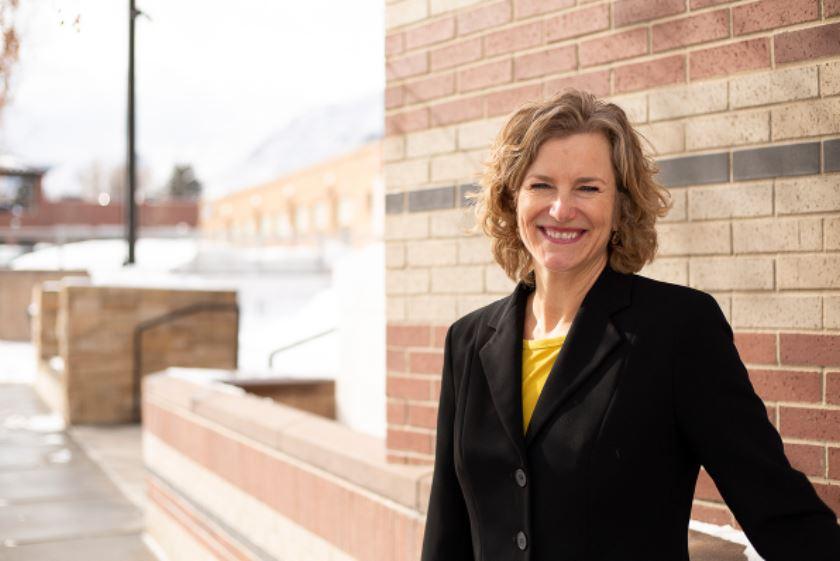Colorado Parks and Wildlife: Reflecting on cultural heritage and land stewardship


The American Indian Academy of Denver is a public charter school for 6th to 10th grade students. Several months ago, a group of teachers from the school visited Roxborough State Park and heard an historical program and wondered why the indigenous people of the region weren’t mentioned. Their experience prompted an effort by Colorado Parks and Wildlife staff to more fully reflect Native American culture and history at Roxborough and underscored the opportunity for all visitors to broaden how they experience Colorado’s relatively young state parks system – one designed primarily with outdoor recreation in mind.
Today, over 2.5 million acres of land fall under CPW management including 414 leased State Trust Land properties enjoyed by hunters and anglers through the Public Access Program, 350 state wildlife areas, and 43 state parks. The latter includes 19,200 acres made available in 2020 to create Fishers Peak State Park near Trinidad and another 488 acres surrounding Sweetwater Lake in Garfield County that is slated to become a first-of-its-kind state park in partnership with the White River National Forest.
This impressive array of properties includes conservation easements and access made available through cooperating private landowners and the Colorado State Land Board. Individually and collectively, these assets are magnificent playgrounds for outdoor enthusiasts. They also represent the long arc of human and cultural history and a platform from which to tell a more complete story about our beautiful state, including its indigenous heritage.
More fully understanding the significance of special landscapes across Colorado takes listening and learning. Another recent example was a talk given at Lathrop State Park by Ravis Henry, a Navajo elder, singer, healer and holder of ancestral knowledge. He made the long trip to Walsenburg from Canyon de Chelly where Henry serves as an interpretive ranger and community outreach coordinator.
Henry recounted the resiliency of the Diné – the name Navajos give themselves – by describing “The Long Walk,” an over 300-mile march from northeastern Arizona to Fort Sumner, New Mexico, endured by men, women and children in the winter of 1864 when they were forcibly removed from their homelands by the United States government as it sought to expand its territory west of the Mississippi River. He then painted the dramatic scene when four years later in 1868, the Diné were allowed to return to their ancestral homeland in the Four Corners area.
The next day, Henry held a silversmithing workshop for children at the Lathrop Visitor Center. He provided bands of nickel, silver and copper for the children to stamp their own unique designs. Then he filed and hammered their creations into a personalized bracelet, all while sharing more history and culture of the Diné. Although scheduled for four hours, Henry graciously stayed the entire day as the activity attracted more and more interest – reflecting a genuine desire by visitors to dive more deeply into this particular place and its history.
With new state parks coming into our system, there is no better time to consider additional approaches to oral history programming and signage, land use planning and protecting sacred places. One timely occasion occurred at the March meeting of the Colorado Parks and Wildlife Commission where it discussed, updated and approved its naming policy, expressing a strong interest and commitment to ensure that the names and descriptions of Colorado’s state parks, wildlife areas, trails and other features are as culturally inclusive as possible. Armed with this new policy, the agency will make every effort to elevate awareness of indigenous heritage and a more complete narrative of the vast network of lands, waterways, and critical wildlife habitat that fall under CPW stewardship.
Thanks in part to a thoughtful group of teachers who spoke up and concerted efforts by CPW staff, visitors to Colorado’s state parks and other properties will have more and more opportunities to come away with a broader historical understanding of the past while they are enjoying the present and preserving these state treasures for countless future generations.
Dr. Carrie Besnette Hauser is the 2021-22 chair of the Colorado Parks & Wildlife Commission. She lives in Glenwood Springs.
Colorado Parks and Wildlife (CPW) is an enterprise agency, relying primarily on license sales, state parks fees and registration fees to support its operations, including: 43 state parks and more than 350 wildlife areas covering approximately 900,000 acres, management of fishing and hunting, wildlife watching, camping, motorized and non-motorized trails, boating and outdoor education. CPW's work contributes approximately $6 billion in total economic impact annually throughout Colorado.
DISCLAIMER: The Colorado Parks and Wildlife (CPW) website maintains press releases containing historical information that may no longer be accurate. Press releases are dated, which should be noted to determine whether the information provided is current. Please review our current regulations and brochures for up-to-date information.
 Travis Duncan
Travis Duncan